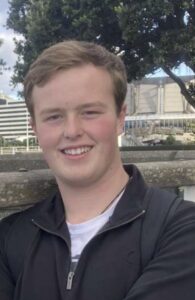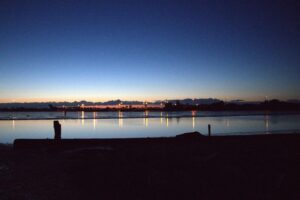
Liam Calder
Like many regional councils, Environment Southland is undergoing its long-term plan deliberations, working through submissions.
Josh Sullivan, Senior Education Advisor and Enviroschools Regional Coordinator at Environment Southland, remarked that it has been really refreshing to see some youth engaging in these conversations. Thanks to Josh’s recommendation, we have gained permission from 17-year-old Southlander, Liam Calder, to share his story.
Liam’s submission:
“As a 17-year-old I can’t stress enough the need for improved youth engagement in Southland’s environmental and regional decision-making processes. While all other councils in the regional have youth reference groups, Environment Southland does not, leading to a lack of youth involvement in discussions about the region’s future. To ensure Rangatahi stay in Southland, engage with them in THEIR future.

Tuturau on the Southland Plains.
I urge the council to engage with youth through schools, student councils, and youth organisations to ensure that young people are included in shaping the future of Southland. I cannot emphasise enough that the councils should be leaders that young people can aspire to and calls for greater inclusivity in regional decision-making.
It is time to engage with the leaders of tomorrow. You may think that young people don’t care but everyone has an opinion. Teach us but more importantly show us, the plans for our future. It is time to cross the line between the suits and the students.
Expanding the Enviroschools Programme into high schools has several compelling reasons. Firstly, the programme promotes a holistic approach to environmental education, focusing on the well-being of the entire school, community, and ecosystem. By implementing this approach in high schools, students have the opportunity to engage with real-life environmental challenges at a critical stage in their development, fostering a deeper understanding of sustainability.

Oreti Beach, Otatara, south of Invercargill.
Secondly, high schools are where young people begin to form their world views and develop skills that will carry into adulthood. By involving high school students in sustainable practices, the programme can create role models who demonstrate these values in their schools and wider communities. This can lead to a ripple effect, as students share their knowledge with family, friends, and peers, spreading sustainable practices and raising awareness about environmental issues.
Thirdly, expanding the programme into high schools can help cultivate future leaders who are equipped to make informed decisions and take action on environmental issues. These students can play a vital role in driving sustainability efforts within their communities, leading to long-term positive impacts. As future leaders, they can bring a sustainability mind set to various sectors, influencing policies and practices at a broader level.
To solve these concerns of mine I am proposing that Environment Southland adopt a youth reference group/youth council to engage and listen to the concerns from the youth in a safe, comfortable and learning environment.

Stead Street Wharf in Invercargill, Southland.
A youth council in Environment Southland is essential for fostering youth engagement and ensuring young people have a voice in regional and environmental decision-making. It provides a formal platform for youth to express their views and contribute to discussions that shape their future. Including a youth council promotes inclusivity, allowing Environment Southland to incorporate diverse perspectives in its policies. This leads to more balanced and forward-looking decisions. Additionally, a youth council cultivates leadership skills among young participants, encouraging them to take ownership of environmental issues and become active community members. 58 councils in New Zealand have a youth reference/ youth council and Environment Southland is missing out on this opportunity to grow closer ties with the community it serves. This engagement helps ensure that the next generation is invested in creating a sustainable and vibrant Southland”.
Liam’s submission can be viewed below from 2.08hr in the recording.
Banner photo: Aurora seen from the New River – a huge environmental focus in Southland. Photo credits (showing places in Southland that are special to Liam): Liam Calder.
“As someone who has spent hours exploring the diverse landscapes and vibrant communities of Southland, these photos hold a special place in my heart. From the serene shores of our beaches to the bustling streets of our towns, every image represents a unique aspect of a region I deeply care about. From our New River Estuary within Invercargill itself to the vast and green plains of Southland we are all one in our environment. My submission is not just a presentation of the Southland environment, it’s a reflection of my commitment to preserving and enhancing the natural beauty and cultural richness of this remarkable place for generations to come.” – Liam Calder